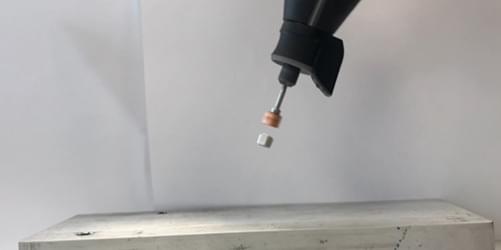NEC Corporation has developed a 150 GHz transmitter IC chip and supporting technologies in preparation for Beyond 5G and 6G mobile access radio communication systems. According to an NEC survey, this is the first demonstration of preferred beam steering performance with 4-channel Antenna-on-Chip (AoC) IC technology using On the Air (OTA) radiation pattern measurement.
Based on innovative RF circuit design technology, it has become possible to integrate 150 GHz phased array antenna elements, phase shifters and transmission amplifiers into a single chip. The 22-nm SOI-CMOS technology used for manufacturing this IC is cost effective, suitable for mass production, and has the ability to support large scale integration of digital, analog and RF functionalities in a chip.
This allows for both higher frequencies and smaller sizes, which also contributes to lower Total Cost of Ownership (TCO) and potentially accelerates social implementation.









